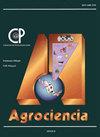绘制油棕的扩张图(Elais guineensis Jacq.)在墨西哥-方法和发展
IF 0.5
4区 农林科学
Q4 AGRICULTURE, MULTIDISCIPLINARY
引用次数: 0
摘要
油棕(Elais guineensis Jacq.)是一种高产油籽作物,与多种社会环境影响有关。墨西哥油棕行业正在兴起,其活力引人注目。本文提供了迄今未发表的地图,以促进在国家一级对这种作物的进展进行独立、透明和可公开获取的监测。第一张地图的数据从2014年到2019年,令人满意地捕获了已建立的种植园(占恰帕斯州官方报告面积的94%),即使是在非常小的地块上(最小的多边形面积只有330平方米)。第二部分,根据2016年至2022年的数据,绘制地图的质量和种植面积的覆盖率都有所提高(占官方报告种植面积的70%),特别是在塔巴斯科州和坎佩切州,这两个州自2012年以来油棕种植在该国扩张幅度最大。将这两张地图与土地利用、植被和自然保护区(PNAs)的数据进行比较,突显出2014年至2022年间,超过7500公顷的与保护有关的栖息地(占油棕总面积的5%)被砍伐。在La Encrucijada生物圈保护区(恰帕斯州)和其他PNAs中大面积存在油棕已得到证实。高空间分辨率地图,例如这里展示的地图,对于区域和全球尺度的地表和地形模型的校准是必要的,这些模型用于环境影响预测。这样的预测可以为国家层面的公共政策和保护计划提供建议。本文提出了统计和空间数据验证和交流的替代方案,以支持就墨西哥油棕的利益和影响进行知情辩论。本文章由计算机程序翻译,如有差异,请以英文原文为准。
MAPPING THE EXPANSION OF OIL PALM (Elais guineensis Jacq.) IN MEXICO — METHODOLOGY AND DEVELOPMENTS
Oil palm (Elais guineensis Jacq.), a high-yielding oil-seed crop, is associated with multiple socio-environmental impacts. The Mexican oil palm sector is emerging and stands out for its dynamism. This paper presents hitherto unpublished maps to facilitate an independent, transparent and publicly accessible monitoring of the progression of this crop at national level. A first map, with data from 2014 to 2019, satisfactorily captures established plantations (94 % of the areas officially reported for Chiapas), even in very small plots (the area of the smallest polygon being only 330 m²). In the second, with data from 2016 to 2022, both the quality of the mapping and the coverage of cultivated areas increased (70 % of the officially reported planted areas), especially in Tabasco and Campeche, the states with the largest expansion of oil palm cultivation in the country since 2012. Comparing both maps with data on land use, vegetation and protected natural areas (PNAs) highlights the contribution of oil palm to the deforestation of more than 7500 ha of conservation-relevant habitats between 2014 and 2022 (5 % of the total oil palm area). The existence of large areas of oil palm in La Encrucijada Biosphere Reserve (Chiapas) and its presence in other PNAs is confirmed. High spatial resolution maps, such as the one presented here, are necessary for the calibration of surface and terrain models at the regional and global scales, which are used in environmental impact projections. Such projections can then advise public policies and conservation plans at the national level. This paper proposes alternatives for the verification and communication of statistical and spatial data, to support an informed debate on the benefits and impacts of oil palm in Mexico.
求助全文
通过发布文献求助,成功后即可免费获取论文全文。
去求助
来源期刊

Agrociencia
农林科学-农业综合
CiteScore
0.50
自引率
33.30%
发文量
51
审稿时长
18-36 weeks
期刊介绍:
AGROCIENCIA is a scientific journal created and sponsored by the Colegio de Postgraduados. Its main objective is the publication and diffusion of agricultural, animal and forestry sciences research results from mexican and foreign scientists. All contributions are peer reviewed. Starting in the year 2000, AGROCIENCIA became a bimonthly and fully bilingual journal (Spanish and English versions in the same issue). Since 2007 appears every month and a half (eight issues per year). In addition to the printed issues, the full content is available in electronic format.
 求助内容:
求助内容: 应助结果提醒方式:
应助结果提醒方式:


